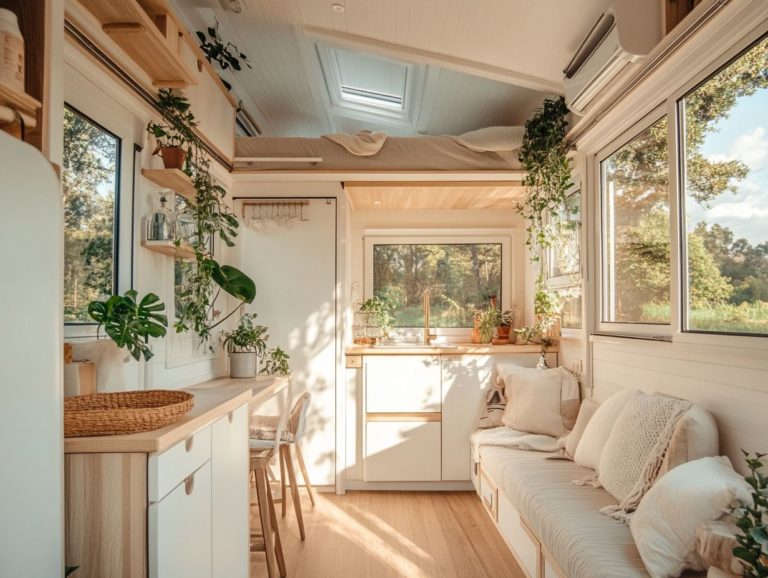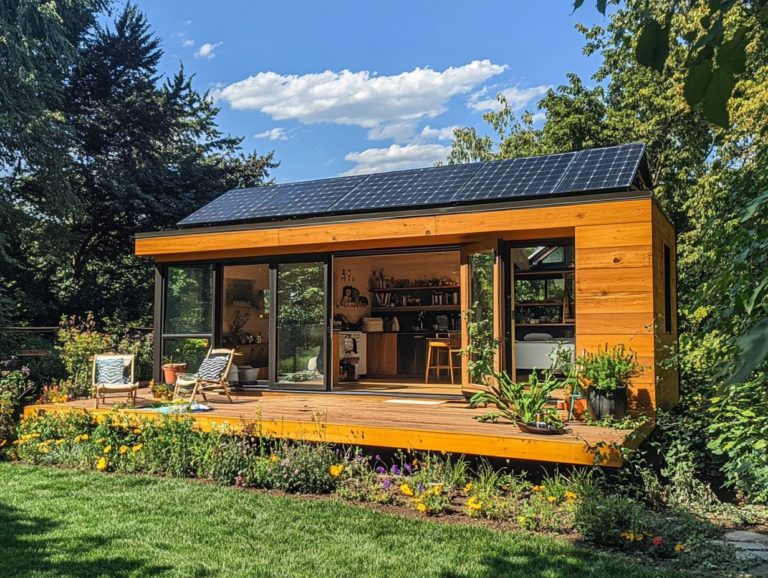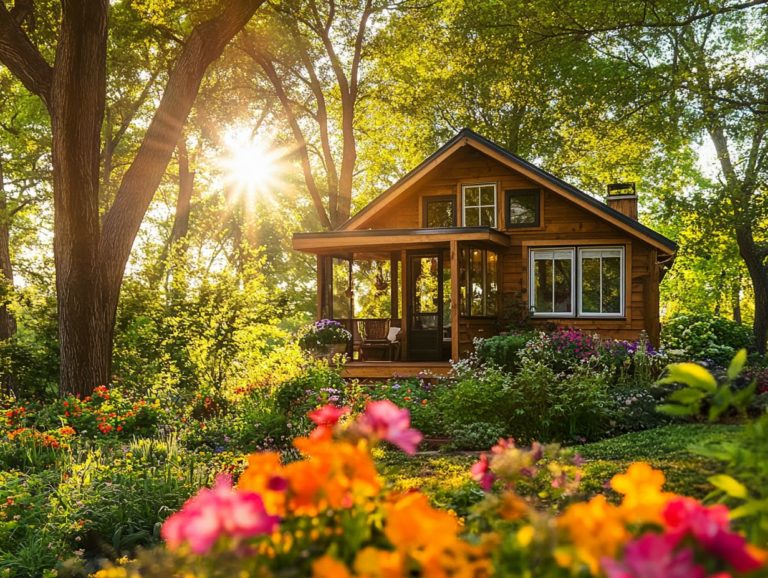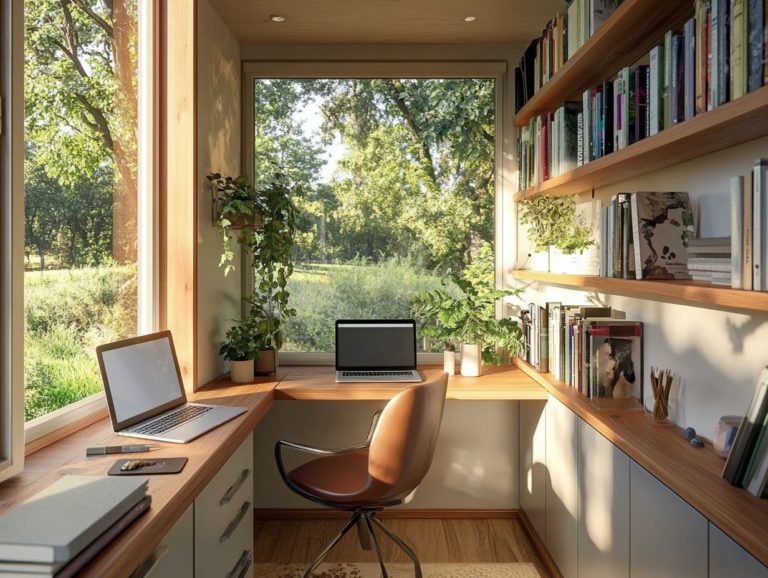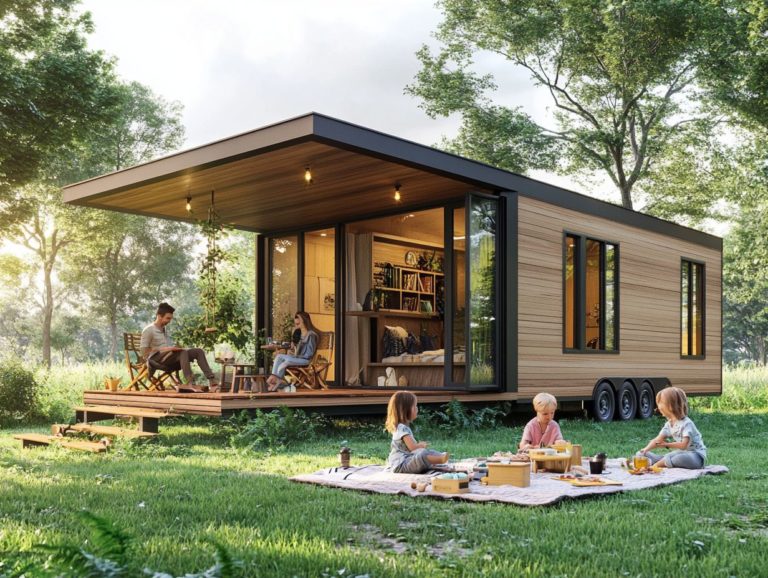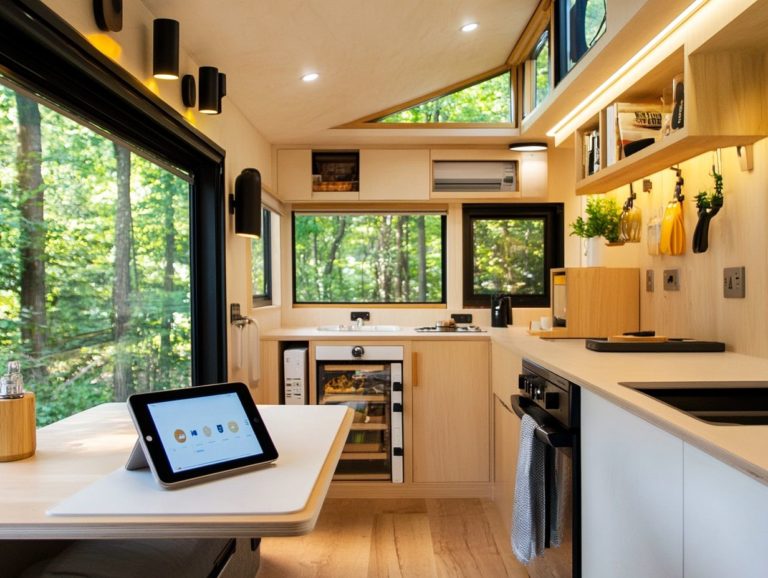Can I Live Off-Grid in a Tiny House?
Curious about the off-grid lifestyle? Embracing life in a tiny house offers you both freedom and sustainability, yet it presents its own distinct challenges.
This article delves into the true essence of off-grid living, highlighting the unique benefits of tiny homes and the essential factors to consider, such as location, energy sources, and building regulations.
It provides a comprehensive breakdown of costs, addresses potential challenges you may encounter, and aids you in determining whether this lifestyle aligns with your personal goals.
Ready to discover if off-grid living suits you?
Contents
Key Takeaways:
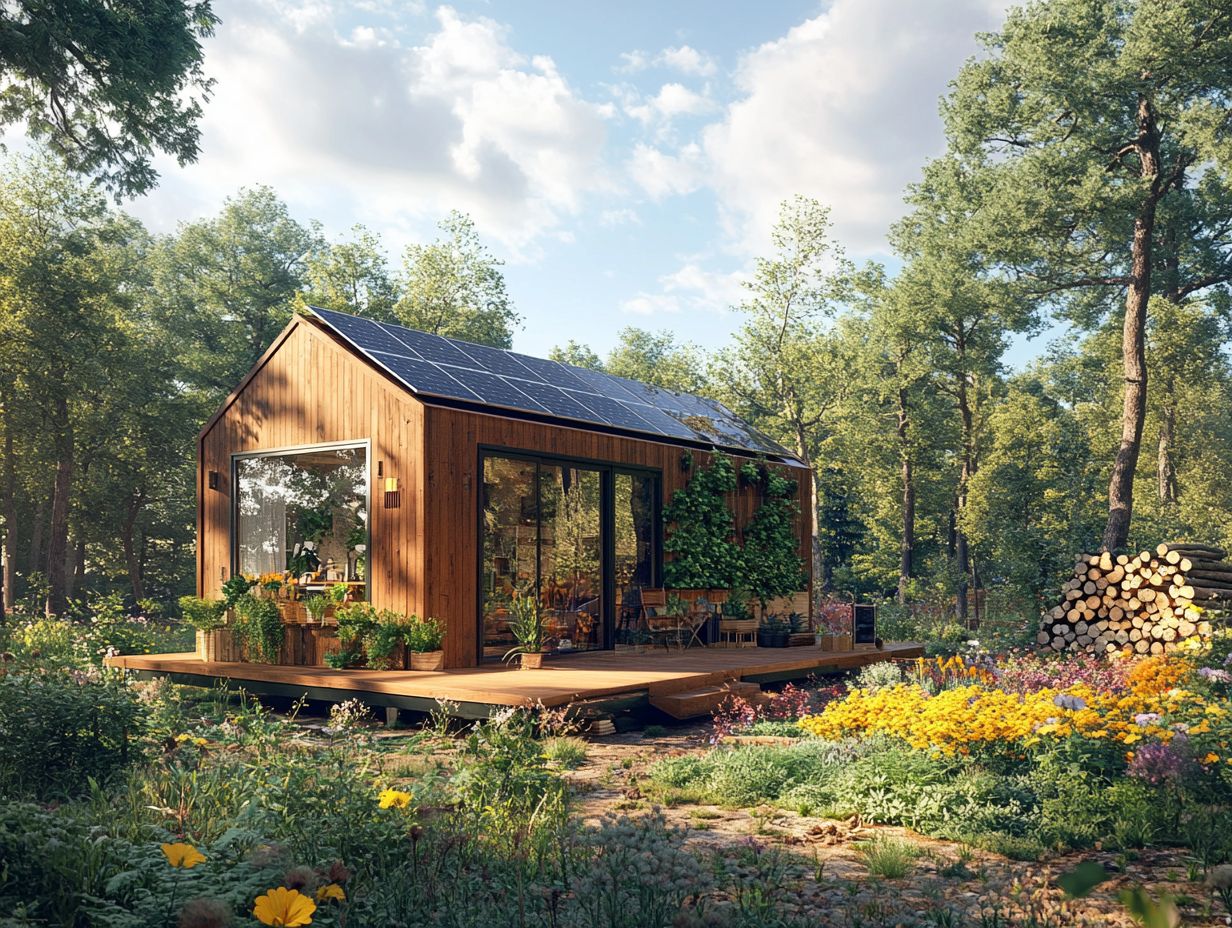
- Off-grid living in a tiny house offers numerous benefits, including reduced environmental impact and increased self-sufficiency.
- Before embarking on off-grid living in a tiny house, it is important to carefully consider location, building regulations, energy and water sources, and associated costs.
- While challenges may arise, such as limited space and resources, maintaining a sustainable lifestyle and assessing your needs and goals can help determine if off-grid living in a tiny house is right for you.
What is Off-Grid Living?
Off-grid living is all about embracing a thrilling way to live sustainably and embrace nature. It operates independently from public utilities and conventional energy sources. By harnessing alternative energy methods and practicing effective waste management, you can tap into resources like natural springs. This lifestyle has gained traction among advocates of sustainability, such as Robin Greenfield, who champion self-sufficiency and a more harmonious existence.
The core principles of off-grid living emphasize self-reliance and environmental stewardship. You re encouraged to adopt practices that minimize energy consumption while promoting ecological balance. Ways to save energy take the spotlight, with many individuals integrating solar power systems to harness sunlight, effectively reducing their impact on the environment.
Innovations like composting toilets are game-changers they not only manage waste sustainably but also enrich the soil, creating a nurturing relationship with nature. By embracing these alternatives, you embody a lifestyle that resonates with sustainability, inspiring others to reconsider their energy choices and live in greater harmony with the environment.
Benefits of Living in a Tiny House
Living in a tiny house presents a multitude of benefits, especially for those devoted to sustainable living and energy efficiency. By choosing this path, you can significantly reduce your impact on the environment while embracing a simpler, more fulfilling lifestyle.
This way of life not only cuts down on monthly expenses tied to mortgages and utilities but also minimizes the demands of maintenance and upkeep. As a result, you free up valuable time and resources to focus on what truly matters to you.
Those who embark on the tiny house journey often find themselves immersed in a vibrant community, connecting with like-minded neighbors who share similar values. These relationships can lead to collaborative projects, such as community gardens or workshops promoting sustainable practices, reinforcing the notion that smaller living spaces can indeed nurture larger connections.
Ultimately, adopting a tiny house lifestyle encourages a more intentional way of living, where you value and minimize resources, paving the way for a life rich in experiences rather than mere possessions.
Essential Considerations for Off-Grid Living
Before you embark on your off-grid living journey, it’s crucial to weigh several factors that will influence your lifestyle. Consider urban zoning laws, resource availability, and energy-efficient designs specifically tailored for a tiny house.
These elements will shape the feasibility and sustainability of your new way of life, ensuring that your goals harmonize with the principles of autonomous living.
Join the movement towards sustainable living today!
Location and Building Regulations
Choosing the right location for your tiny house is absolutely crucial. You ll need to navigate urban zoning regulations that can differ significantly in places like California, Florida, and Hawaii, where off-grid living is really taking off.
Understanding local laws in cities like Orlando or Asheville empowers you to create a sustainable living environment that aligns perfectly with your off-grid goals.
Researching local zoning laws is essential, as they dictate where tiny houses can be placed and the requirements you must meet for compliance. Some municipalities impose strict size limits, while others offer more flexibility in design.
Regions like Fresno welcome tiny housing communities, thanks to recent zoning changes that have opened up this lifestyle. Cities like Boulder, Colorado, have more restrictive regulations, often requiring permits for such setups.
By staying well-informed, you can avoid legal pitfalls and effectively advocate for changes that support your off-grid living aspirations.
Energy and Water Sources
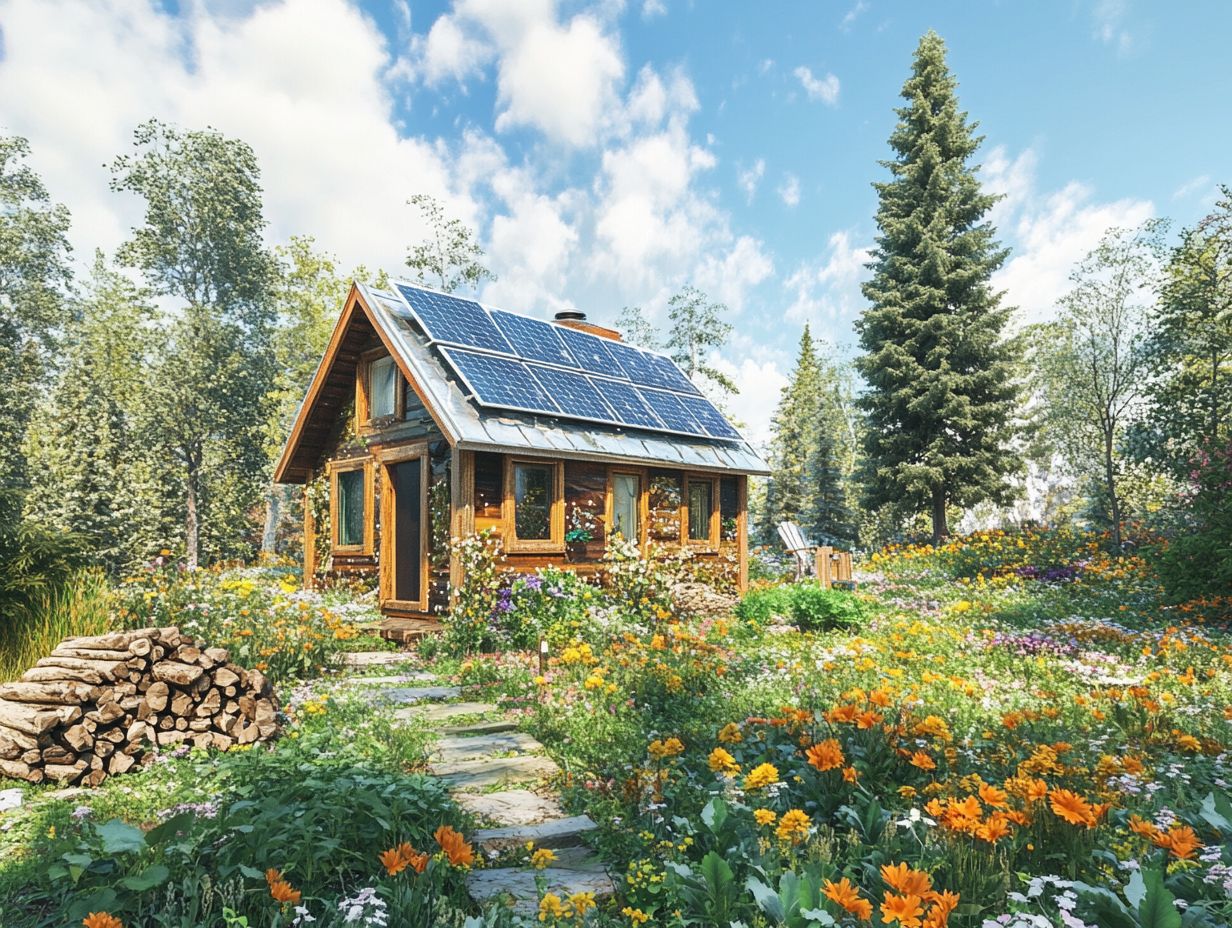
Choosing reliable energy and water sources is key to living independently. Energy-efficient solutions like solar power, paired with water sources such as natural springs, can greatly enhance your sustainable living experience.
Proper waste management practices, including composting toilets, further boost the self-sufficiency of your tiny house environment.
Beyond solar energy, consider wind turbines and micro-hydro systems. These options offer alternative ways to generate electricity, each with its own set of advantages and challenges, such as initial installation costs and specific site requirements.
Water catchment systems that harvest rainwater from roofs can complement natural springs, promoting water conservation while reducing your dependence on distant sources.
By incorporating sustainable practices like permaculture gardening, a way to grow food that works with nature, and rainwater filtration, you streamline resource use and cultivate a harmonious relationship with the natural environment.
This holistic approach enhances the resilience and efficiency of your off-grid systems, making them not just a dream but a viable option for long-term living.
Costs of Off-Grid Living in a Tiny House
Understanding the costs of off-grid living is essential. Expect the initial investment for a tiny house to range from $20,000 to $80,000 based on location, materials, and design.
Ongoing expenses include maintenance, utilities, and resource management. However, tiny house owners often enjoy lower property taxes and utility bills compared to traditional housing.
By understanding these elements, you can step confidently into this rewarding lifestyle that brings freedom and adventure!
Initial Investment and Ongoing Expenses
The initial investment in a tiny house can vary dramatically. This variance depends on factors like location, materials, and design features that promote sustainable living.
You ll also need to consider ongoing expenses, such as maintenance, utilities, and resource management, including alternative energy solutions, as part of your long-term financial strategy.
Incorporating sustainable practices like solar panels or rainwater collection systems can significantly lower these recurring costs, leading to substantial long-term savings. By balancing the initial investment with future savings, this lifestyle can transform from a mere appealing concept into a savvy financial decision.
Challenges and Solutions for Off-Grid Living
Off-grid living presents unique challenges. You need to pay careful attention to ensure a smooth transition to a sustainable tiny house lifestyle.
You may encounter issues like limited space, resource management, and efficient waste disposal. However, with careful planning and innovative strategies, you can effectively tackle these hurdles.
Embracing this approach empowers you to cultivate an independent lifestyle that aligns with your values of sustainable living.
Dealing with Limited Space and Resources
Living in a tiny house inherently means navigating limited space. This calls for creative solutions to maximize utility while fostering a sustainable living environment.
By embracing energy-efficient designs, multifunctional furniture, and smart storage solutions, you can optimize the space you have while managing essential resources effectively.
Incorporating design principles like open floor plans and vertical storage can drastically enhance your sense of spaciousness. For instance, lofted sleeping areas can free up valuable floor space for living and dining.
Opting for built-in furniture think convertible sofas or collapsible tables gives you the flexibility to adapt your space throughout the day.
Tiny houses often come equipped with energy-efficient appliances and sustainable materials. These not only help reduce your environmental footprint but also lead to lower utility bills.
Successful examples, such as the Tumbleweed Tiny House and Eco Capsule, showcase how these principles can create a harmonious and functional living space, proving that indeed, less can be more. However, it’s also important to consider the legal aspects of tiny house off-grid living to ensure a smooth transition into this lifestyle.
Maintaining a Sustainable Lifestyle
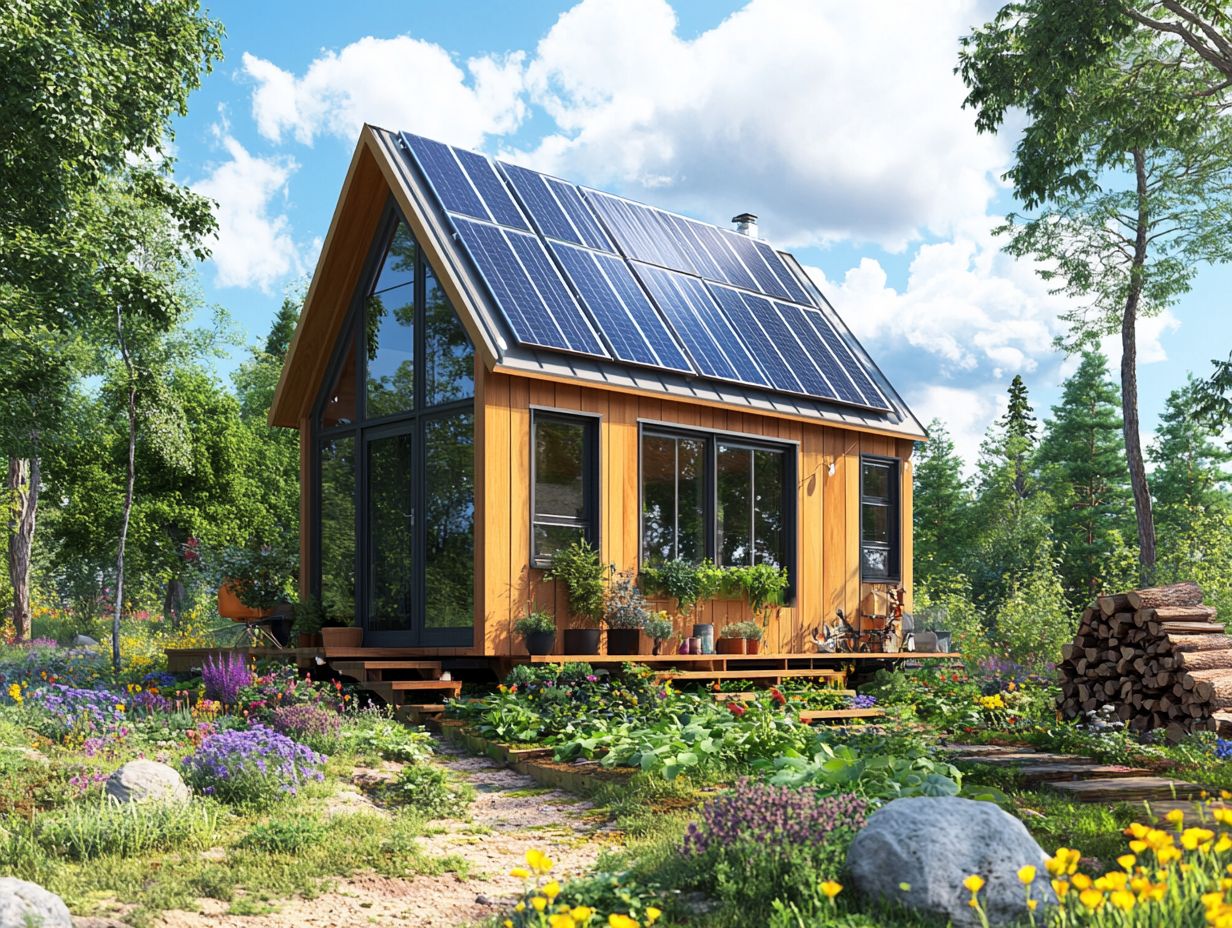
Maintaining a sustainable lifestyle while living off-grid means adopting effective waste management practices. For example, using a composting toilet and implementing food preservation techniques can minimize waste and maximize resource use.
By embracing these strategies, you can create a holistic approach to sustainable living that honors both the environment and your own needs.
This lifestyle opens the door to innovative solutions like rainwater harvesting systems and solar energy setups, reducing your reliance on conventional utilities.
Engaging in community events spreads awareness about sustainable practices and helps build a supportive network for those on this journey.
Continued education about permaculture design methods of sustainable agriculture and adaptive methods tailored to local ecosystems empowers you, ensuring your resilience in the face of changing circumstances.
Ultimately, committing to learning and adapting is essential to cultivating a sustainable ethos that benefits both you and the broader community.
Is Off-Grid Living in a Tiny House Right for You?
Deciding if off-grid living in a tiny house is the right path for you necessitates a thoughtful evaluation of your personal needs, aspirations, and lifestyle preferences much like the insights shared by advocates such as Robin Greenfield.
This lifestyle offers the allure of independence, sustainability, and a deeper connection to nature. However, it also requires a commitment to adaptability and resilience to truly flourish within its distinctive framework.
Assessing Your Needs and Goals
Assessing your needs and goals is the essential first step in determining whether off-grid living in a tiny house aligns with your vision of sustainable living and autonomy.
This evaluation should encompass not just your financial landscape but also your lifestyle preferences, resource availability, and opportunities for community engagement.
By closely examining these elements, you can uncover ways to restructure your current financial commitments to support an off-grid lifestyle. For instance, you might explore downsizing expenses or reallocating savings to invest in vital utilities like solar power and rainwater collection systems. Consider looking into living off-grid in tiny house communities for inspiration.
Reflecting on your personal values and desired activities such as gardening, local volunteering, or crafting can significantly enhance your overall quality of life in a tiny home.
This introspective approach paves the way for a more fulfilling existence and fosters connections within smaller, eco-conscious communities. Ultimately, this will reinforce the success of your off-grid journey.
Frequently Asked Questions
Here are some common questions about living off-grid in a tiny house.
Can I Live Off-Grid in a Tiny House?
Yes, you can live off-grid in a tiny house as long as you have the necessary resources and knowledge to sustain yourself without relying on traditional utilities.
What is Off-Grid Living?
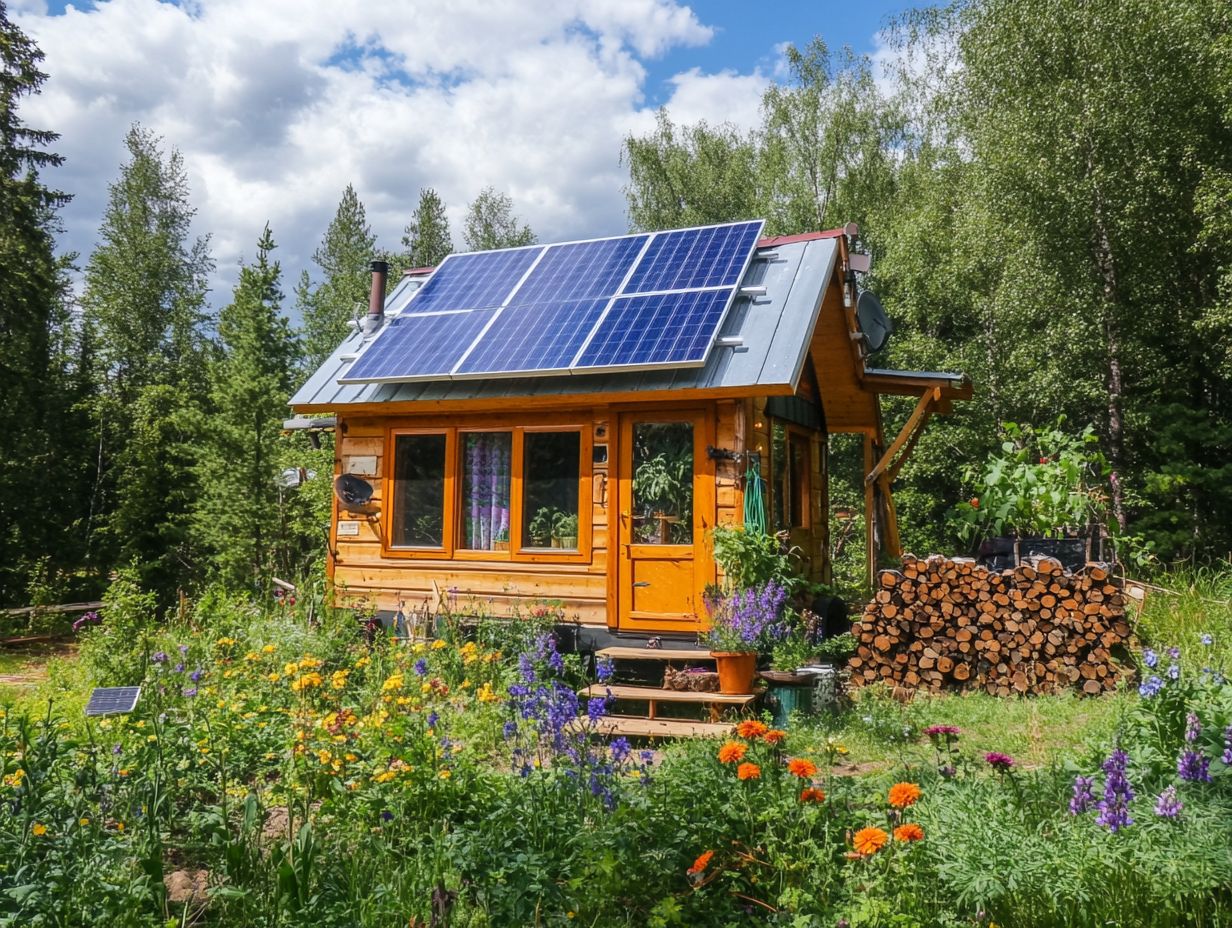
Off-grid living means living without connecting to city services like water and electricity.
Do I Need a Special Permit to Live Off-Grid in a Tiny House?
The permit requirements for living off-grid in a tiny house vary depending on your location. It’s important to research and understand the regulations in your area before embarking on this lifestyle.
What Are the Essential Resources for Off-Grid Living in a Tiny House?
The essential resources for off-grid living in a tiny house include a reliable source of electricity (such as solar panels), a water source (such as a well or rainwater collection), and a way to handle waste (such as a composting toilet).
Is Living Off-Grid in a Tiny House Expensive?
The cost of living off-grid in a tiny house can vary depending on the resources and amenities you choose. However, it can also be a more cost-effective option in the long run compared to traditional living.
What Are the Advantages of Living Off-Grid in a Tiny House?
Some advantages of living off-grid in a tiny house include independence from traditional utility companies, lower living expenses, and a smaller carbon footprint.

